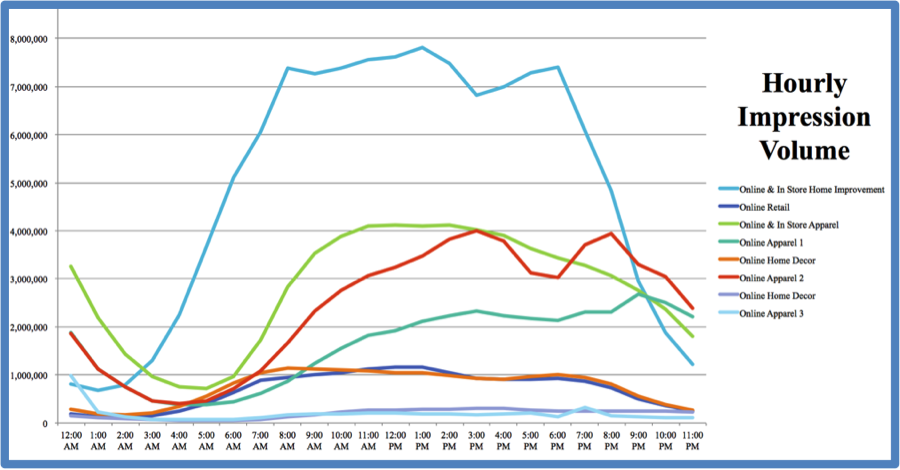Working in an agency, I find myself benefiting from the volume of accounts and experiences to which I’m privy. In the Paid Search industry, we often discuss trends that surface across industries, platforms and so on. Having dozens of accounts at my fingertips allows me to dig into these trends and discover insights from actual data, not just large-scale surveys and generalizations.
One area of frequent interest is the shopping trend we see across ecommerce sites. More specifically, the flow of traffic by hour of day. To satiate my curiosity and allow for insights into optimizations to implement in my own accounts, I decided to dig into this performance across some of our accounts.
Below, I have gathered the data from 8 different accounts, from various ecommerce industries. This data has been collected from time period of 8/1/14 through 7/31/15. Each color represents a data line on the forthcoming graphs.
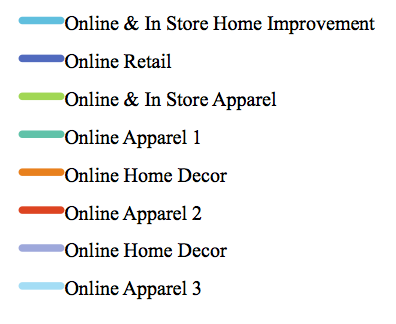
The goal here is to take a look at what trends exist across all ecommerce accounts and also what might surface in a specific type of industry.
Let’s begin with the overall impression volume we see across these accounts:
The Data
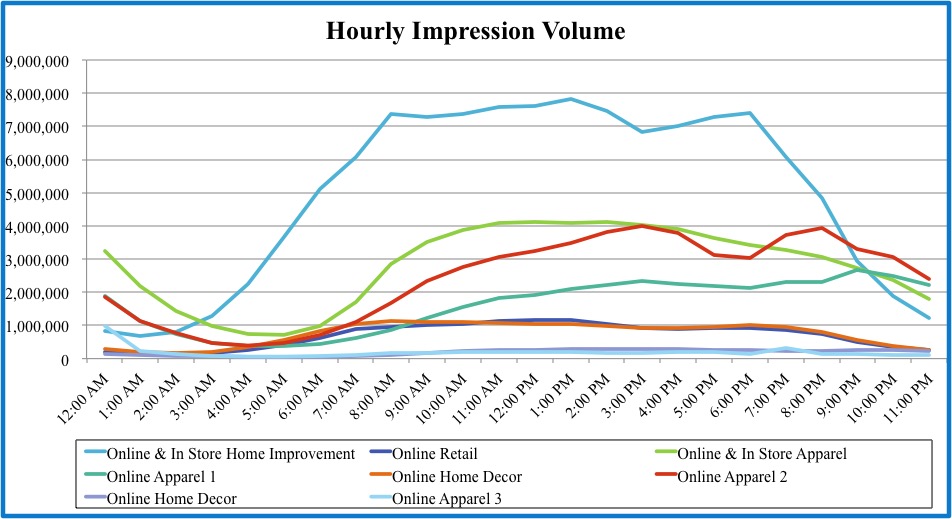
Regardless of the volume that each account is capable of receiving, there are some clear timelines that all of the data follow: Traffic begins to pick up in the early morning, and traffic also drops off in the later evening. With this specific data, however, we can see that for some of these accounts there are more distinct patterns for such metrics as CTR and conversion rate:
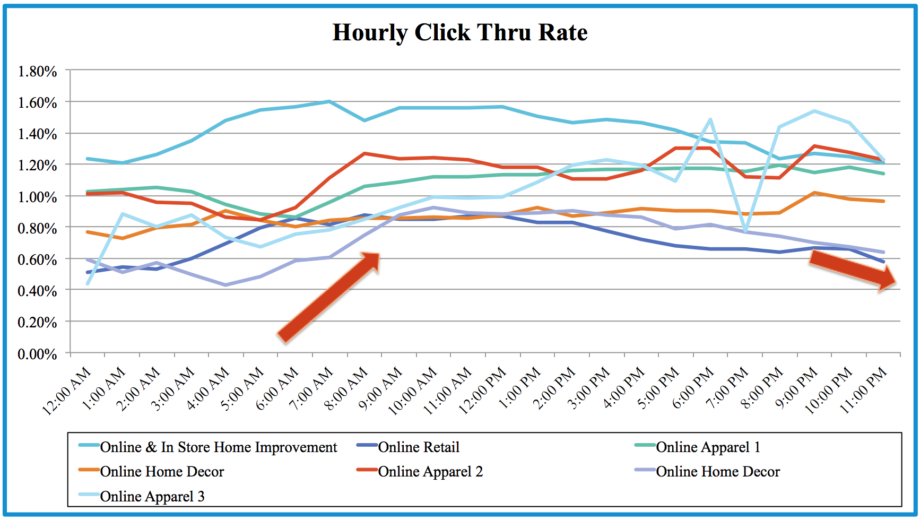
The marginal increase in CTR is most pronounced between 4 am and 9 am, meaning that the ads that are being served are meeting a more engaged user.
Another metric of value is an account’s conversion rate. Looks at the aggregate data, it has a similarly pronounced pattern:
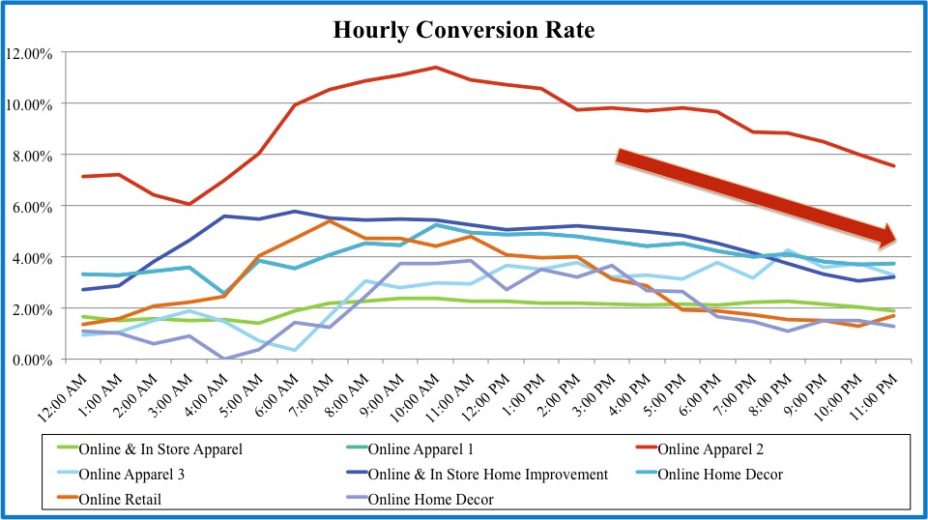
The major points of emphasis include:
- Each industry experiences a lift in conversion rate sometime between 3 am and 7 am, but all accounts see a gradually declining conversion rate throughout the day.
- The “Online Retail” example peaks at 6 am and only decreases from there
- The “Online Apparel 2” sees consistently strong conversion rates, with the highest average time of day being around 10 am
The major anomaly from this trend is the “Online Apparel 3” example, which from the tables above, can be assessed differently. This account is a much lower volume example, and we can see that the average CTR actually increases throughout the evening (meaning that a reduced conversion rate is not entirely unpredictable). Even for the other low-volume accounts, the overarching trends still reveal that conversions seem to peak in the earlier hours of the day and gradually drop as the day proceeds.
So What Does This Mean?
Although each account is inherently going to be different, the data above provides a glimpse at the times that are consistently the most crucial. If you look at your data and find that your performance varies wildly outside of these trends, you may want to reconsider some of your settings. If you aren’t seeing a strong conversion rate early in your day, what are you seeing?
A first step in assessing what’s working (or not working, as the case may be) is to segment your data. If you aren’t seeing a strong conversion rate early in the day, what are these visitors doing instead? Are they a less profitable demographic (such as mobile visitors, or from a particular geo target)?
To take this data a step further, let’s review how the CTR and conversion rate changes hour over hour:
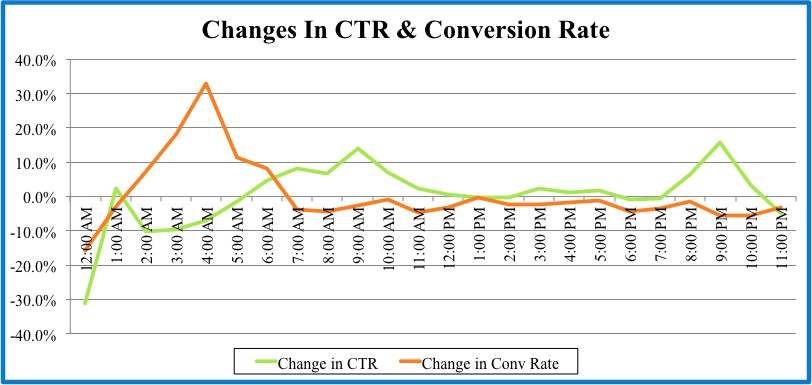
In the table above, the hour-over-hour change in metric is laid out. These ecommerce accounts see the largest boost in CTR between 8 am and 9 am, and then again from 8pm-9pm, where both time frames experience a 10%+ increase in CTR.
We can also see that from 3 am – 4 am, conversion rate sees a lift greater than 30%. A drop in conversion rate until around 7 am immediately follows it where the hourly loss in conversion rate is around 3-5%.
How Can I Use This Data
For these accounts, the biggest optimization resting right in front of our eyes is that of performance shift. I’m talking about the dramatic shift in hour-over-hour CTR and conversion rate. When the average loss in conversion rate from 10 am until midnight is 2.94%, what does it say about my settings and targeting if I fall drastically outside those estimates? For the “Online and In-Store Apparel” example, the conversion rate falls an average of 1.7% per hour from 10 am – midnight, which is very subtle compared to the 5.1% drop for the “Online Home Décor” vendor.
Having spoken to a few examples in the online apparel industry, let’s look at just those accounts:
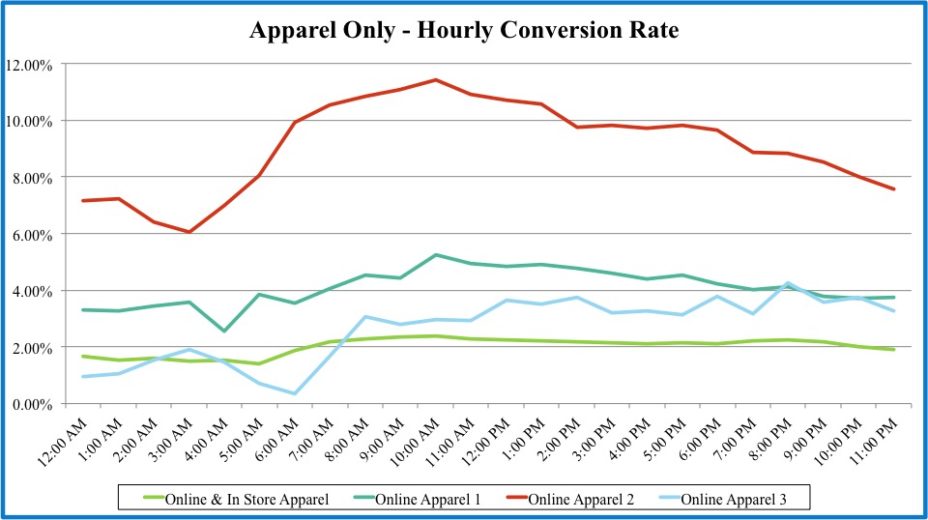
Side by side, the boost in conversion rate is that much clearer in the way we see a drop in the early morning hours, immediately followed by the higher conversion rates.
These segments are different customer targets.
As you uncover the details of your own account’s performance, you may find that those shoppers who purchase more efficiently at 3 am are actually searching for lower funnel terms. Or perhaps this is your remarketed audience. There may be a subset of products that sell more cost-efficiently at these times of day than others in your inventory.
The possibilities that await with these snippets of data allow for you to further target and customize your PPC settings.
As you skim the bullet points of this article, there may be greater or lesser takeaways, depending on the volume of data you deal with. Even those smaller accounts stand to benefit from this analysis. Another temperature check for your accounts is to review your cost versus conversion ratio. Note: This can also be constructed using revenue data, for improved return.
In the table below, we see what percentage of total cost is associated with each hour of the day. The column to follow shows the percentage of total purchases that are completed within the designated hour:
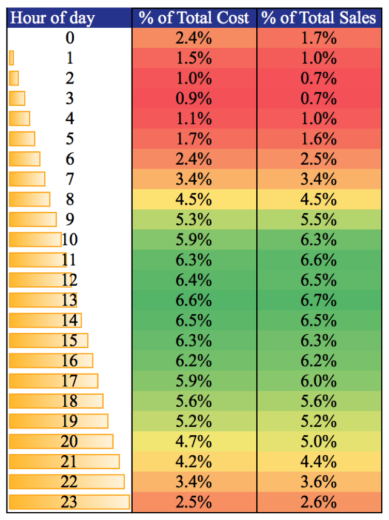
The conditional formatting gives an at-a-glance view of where the majority of your traffic resides. For this dataset, cost is concentrated between 11 am and 4 pm. Conversions also hover between 10 am and 5 pm. When identifying where to begin your ecommerce optimizations, a table of this nature supplies a quick understanding of where your efficiencies lie.
TLDR? –> The general colors of each cell should match each other. If they don’t match, you have inefficiency or lost opportunity.
In Conclusion
Although your account’s specific performance may different for a myriad of reasons, the big picture tells us that *yes* online retailers often have similar types of shoppers. And the most important thing you can do as their marketers is to see what your data tells you and to optimize upon that.



